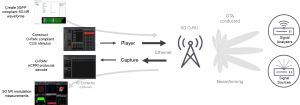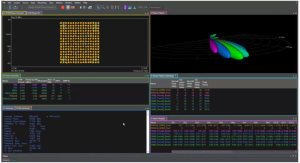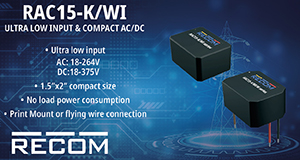Author: Ajay Kumar, R&D Principal FPGA Engineer, Keysight Technologies
The Open Radio Access Network (O-RAN) Alliance led by a group of mobile network operators (MNOs), has been the driving force for the evolution of 5G Radio Access Network (RAN). The aim is to steer the industry towards more open, interoperable, virtualized, and intelligent architecture. This article outlines the crucial validation steps needed to bring O-RAN radio from silicon to deployment-ready, secure and intelligent. It highlights the needs and challenges in pre- and post-silicon validation, multiple-input multiple-output (MIMO)/massive MIMO (mMIMO) performance verification, energy efficiency measurements, security testing, and radio management. To begin, let us explore the brief history, evolution, and architecture of the RAN.
Historically, RAN deployments have been dominated by proprietary hardware from a small group of vendors, leading to high cost and limited flexibility. O-RAN addresses these challenges by disaggregating the RAN architecture and introducing standardized interfaces for interoperability and virtualization. This open approach fosters flexibility enabling organizations to mix and match solutions from different vendors bringing down costs and promoting innovation.
In addition, recent advancements in artificial intelligence (AI) and machine learning (ML) are further enhancing O-RAN by making it more intelligent. This move will enable even more innovation when it comes to energy efficiency, enhancing security, network optimization, and maintenance of the network.
Key Components of O-RAN architecture
Figure 1 below breaks down the key components of O-RAN architecture which includes:
- O-RAN radio unit (O-RU): Performs analog/RF transmitter and receiver functions along with processing the lower part of the physical layer such as Fast Fourier Transform (FFT)/inverse FFT (IFFT), beamforming, precoding, cyclic prefix insertion/removal, and compression/decompression.
- O-RAN distributed unit (O-DU): Handles baseband processing, scheduling, radio link control, medium access control, and the upper part of the physical layer.
- O-RAN central unit (O-CU): A centralized and virtualized unit that is responsible for the packet data convergence protocol layer.
- O-RAN intelligent controller (O-RIC): Handles near real-time and non-real-time service to gather information from the network and uses artificial intelligence and machine learning to perform the necessary optimization tasks.
- Service Management and Orchestration (SMO): Manages and orchestrates the RAN centrally including both RICs.

Figure 1: O-RAN architecture with user equipment and core network.
The Radio Unit (RU) is a critical fronthaul component, providing wireless connectivity to user equipment. It communicates with the rest of the O-RAN components to transfer information to and from the core network. O-RAN alliance 7.2x split option redistributes physical layer functions between O-RU and O-DU to strike a balance between fronthaul bandwidth requirement, latencies and the complexity of the components. This influences the overall O-RU architecture of radio unit by adding signal processing functions to the digital part of the radio.
During the product development cycle, design teams validate functionality through block-level simulations. However, at the system level, simulation complexity and runtime increase dramatically. This makes it vital to initiate pre-silicon validation at the right stage and well before tape-out.
Pre-Silicon Validation to Build Confidence Before Tape-Out
Pre-silicon validation involves emulating the design before fabricating the chip to provide a more accurate representation of the design in real-world conditions. This step helps to achieve testing goals in a reasonable time span by identifying design flaws early on. However, to determine the required test cases for specific functions, a thorough understanding of the test specifications is required. These test specifications cover a wide variety of tests for control, user, synchronization and management (CUSM) plane protocols.
Creating test vectors that conform to 5G standards is a complex task, given the vast number of parameters involved. Adding to the challenge, these test stimuli need to be sent in a synchronous manner from both Ethernet interface on DU and either through the non-standardized time-domain IQ interface or the RF interface side for complete radio.

Figure 2: O-RU ASIC test protocol stack
To achieve the pre-silicon testing goals, it is important to have pre-verified test suites to avoid spending time debugging the test cases itself. Test setup observability is also of utmost importance in order to identify and resolve any issued early, and to prevent potential flaws from being carried over into the final taped out design. Figure 2 shows O-RU test protocol stack and controller test setup for ASIC emulation.
Post-Silicon Validation to Bridge Gap for Production
While the interoperability testing methodology, which involved testing the components together as a gNB, has remained largely consistent, conformance testing has evolved. Conformance testing ensures that each component adheres to specifications defined by the O-RAN Alliance.
To maintain momentum in the fast-paced design cycle, a smooth transition is required from pre-silicon to post-silicon validation. Hence, the same workflow and tools for signal generation and analysis are required to reuse the same test suite.

Figure 3: O-RU testing and validation test setup diagram and flow
In the post-silicon phase, testing access is primarily limited to the O-RAN and RF ports of the O-RU. To test O-RU, as illustrated in Figure 3, an O-DU emulator is required to send and receive CUSM-plane messages on O-RAN port, a vector signal analyzer to receive downlink RF signal sent by O-RU and a signal generator to send uplink signal to O-RU. Additional equipment may be required for non-conducted tests. All these test setup components are required to synchronize to common clock and work with-in tight fronthaul timing requirements.
MIMO and Massive MIMO to Achieve Desired Performance
MIMO and mMIMO technologies use multiple antennas – typically 16 or more for mMIMO systems, to serve multiple users simultaneously on the same frequency band. This increases spectral efficiency and throughput. With massive MIMO, advanced beamforming techniques need to be applied to steer radio signals precisely towards users to improve signal quality and reduce interference. However, as system complexity grows, performance validation can be highly complex, time-consuming and expensive.
To test massive MIMO radio unit, an O-DU emulator is required with tools to construct, play, capture and measure O-RAN traffic over ethernet interface; and multi-RF transceiver to generate the beams with noise and interference in different directions and receive at the same time. Test setups not only need to measure all beams and signals in uplink and downlink directions but also have the ability to pinpoint beamforming issues. Figure 4 shows an example of downlink beamforming with magnitude and phase weightings and corresponding beam patterns and EVM figures.

Figure 4: Downlink beamforming with magnitude and phase weightings and corresponding beam patterns, EVM figures
Energy Efficiency for Sustainability
With the exponential growth in wireless connectivity, energy efficiency has become a top priority for operators in order to reduce operational costs, achieve sustainability goals and reduce environmental impact. As many studies have shown that majority of energy is consumed by RAN, the O-RAN community is working on standardizing energy saving modes, with the goal to reduce power consumption without degrading the quality of service.
O-RU is the most power-hungry component in the access network. However, energy saving can be accomplished by numerous means such as variable clocking, dynamic power amplifier biasing, cell & carrier shutdown, RF channel reconfiguration, sleep modes, discontinuous transmission & reception. With the disaggregation of RAN, there is need to characterize each component to completely understand the trade-offs at system and network level. Figure 5 shows O-RU site power dissipation over a 24-hour period with and without microsleep enabled and potential savings.

Figure 5: O-RU site power dissipation over a 24-hour period
Security Testing for Uninterrupted Radio Access
In a disaggregated, multivendor O-RAN environment, there are increased security risks for individual components, interfaces, network functions, and data. The O-RAN threat modeling and risk assessment specification includes over 160 distinct threats to these elements including O-RU.
Each element, protocol, and interface need to be scanned for vulnerabilities, stressed under real-world threat scenarios and checked for performance under simulated attacks. It is also important to ensure effective risk mitigation strategies are in place. With this in mind, automated security testing is critical, not only for compliance with security standards but to ensure guaranteed radio access, and alignment with O-RAN zero trust principles.
Radio Management with RIC for Operational Efficiencies
While the Service Management and Orchestration (SMO) layer handles the coordination of network resources, the RIC plays a key role in optimizing radio access network performance. The non-real-time RIC uses rApps to apply AI/ML-driven long-term optimization for less time sensitive operations. Whereas, the near-real-time RIC deploys xApps to make real-time network adjustments that are between ten milliseconds to one second.
Together, these controllers enhance network utilization and operational efficiency through advanced functions such as beam management and radio resource management. To ensure reliable performance, both open-loop and closed-loop strategies must be implemented and rigorously tested for continuous optimization.
Conclusion
The journey of O-RAN radio unit from silicon validation to smart networks is highly complex but essential to realize the full potential of open and intelligent networks. To keep up with accelerated design cycles and ensuring compliance with O-RAN fronthaul standards, it is essential to have well-planned test setups, robust tools, pre-verified test cases, and automated test suites to transition smoothly through different phases.








